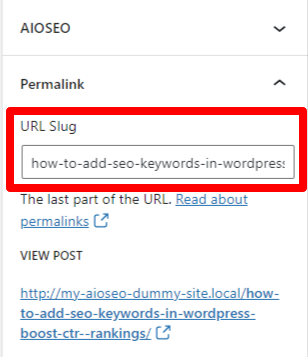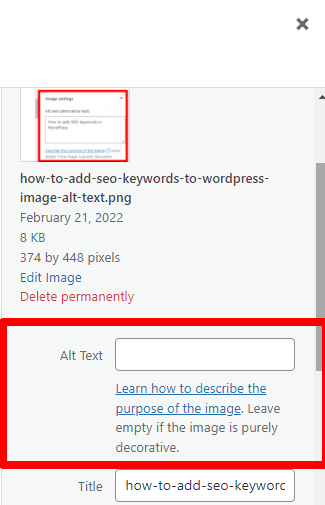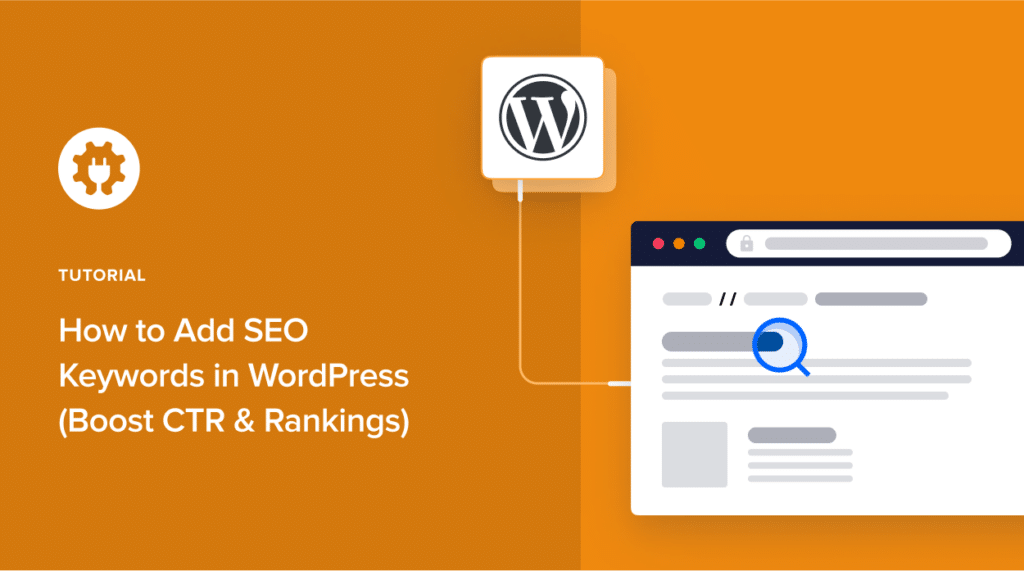Want to know how to add SEO keywords in WordPress?
SEO keywords are central to any SEO campaign as they help your content rank higher on search engine results pages. They are also an important element that helps boost your clickthrough rate (CTR) — especially if you use keywords that meet search intent.
In this article, we’ll show you how to add SEO keywords in WordPress so you can boost your organic clickthrough rates (CTR) and search rankings.
In This Article
What are SEO Keywords?
SEO keywords are words and phrases you want your content to rank for on search results. They’re a crucial element of your SEO strategy as they help direct your content creation. That’s because each piece of content you publish must be targeted at a particular keyword that your target audience is interested in.
To find the right SEO keywords for your brand, you must conduct keyword research. This is the practice of using tools to discover the phrases and words your target audience uses the most as they search for a product, solution, or topic in your niche.
Then, when you feature these SEO keywords in your content, search engines know that your content is relevant to a search query made. As a result, they’ll serve it up to users.
How to Add SEO Keywords in WordPress — The Easy Way
Once you’ve conducted your keyword research and discovered the ones to use in each post, you must also know how to use them in your content strategically.
Note: Strategically adding SEO keywords in WordPress is much easier if you have an SEO plugin like AIOSEO.

AIOSEO is a powerful tool that helps you DIY many aspects of your SEO. This includes technical SEO best practices like implementing redirects, creating sitemaps, etc. It also helps with most on-page SEO, of which one element is adding SEO keywords to your posts and pages.If you haven’t downloaded SEO yet, there’s no better time than now. So go ahead and download the plugin here.
With that being said, let’s quickly look at a few tips on how and where to place your SEO keywords.
Post Title
Your title is the first thing readers see on search engine results pages (SERPs), so it’s best to include your SEO keyword. This way, you’ll be able to prove search intent quickly, resulting in high clickthrough rates. Make sure to frontload your SEO keyword as much as possible. This ensures that it remains visible, even if your title gets truncated, particularly when viewed on smaller screens.
To add an SEO keyword in your title, scroll down to the bottom of your post or page, where you’ll find AIOSEO’s General Settings section.

Scrolling further down will lead you to a text box for editing your title. Type in your post title and make sure to include your SEO keyword.

To avoid having your title being cut off on SERPs, keep it within 60 characters.
Headline
The headline is the first element readers see on your page. It’s different from your SEO title in that the SEO title is what people see on SERPs, while the headline is crafted for people who are already on a page. Once search engines are on a page, it’s also one of the first elements they use to determine what the page is about. Therefore, including your SEO keywords will improve your chances of ranking for relevant search queries.
You can add your SEO keyword in your headline as you type it right at the top of the page.

Try as much as possible to frontload your keyword. This way, users and search engines quickly get what your post is about. This way your headline will be optimized.
Header Tags
Header tags are primarily used to separate sections on a web page. However, header tags are not just effective at organizing the information. You can optimize your content by including your SEO keywords in them. Search engines and readers use header tags to understand the context of your web page. Therefore, including your SEO keywords helps them quickly do so.
These can be easily added as you write your content, as with the headline.
Introduction and Conclusion
Another important place to add your SEO keyword is in the introduction of your article, preferably the first 150 words. This will help you immediately grab your readers’ attention and encourage them to continue reading. Seeing the keyword in the keyword will convince them that your content will meet their search intent. As a result, they’ll spend more time on your page, signalling to search engines that your content is valuable.
Body Copy
You should also sprinkle your SEO keywords in your body copy. Don’t overdo it, though, as this could be deemed keyword stuffing. Instead, strike the right balance, so search engines know that your content matches the user’s search query. Besides, keyword stuffing also detracts from your page’s user experience (UX).
URL
Your URL is another important place to add your SEO keywords. For one, it helps search engines know what your content is about. Secondly, because it appears right below the title on SERPs, it’s one of the first things users see. Finally, if your keyword is in the URL, it cements the fact that your content will meet their search intent.
While WordPress generates a URL for you based on your headline, you must customize it to include your keyword. This is very easy to do with a tool like AIOSEO. Simply save your draft, then head to the Post settings on the right-hand side of the screen. Scroll down until you find the Permalink setting.

You can then optimize your URL by removing stop words, dates, and numbers. You can also add your SEO keyword.
Meta Description
The meta description is the last element of your page or post that appears on the results snippet on SERPs. Because of this, it’s another strategic place to add your SEO keyword. Again, with AIOSEO, editing your meta description is easy. Just scroll to the bottom of your post/page to the General section of AIOSEO’s settings. You’ll find the Meta Description field just under the Post field.

As with the other elements on your post, front-load the keyword as much as possible.
Once you’ve filled in the Post Title, Meta Description, and URL Slug field, AIOSEO will show you a preview of what the snippet will look like on SERPs. You’ll find the snippet under the General section of your AIOSEO settings at the bottom of the page you’re editing.

Make sure everything is correct before you publish.
Image Name and Alt Text
If you include images in your content (as you should), include your keyword in the image name and the alt text. The easiest way to add image alt text is to upload your image then fill in the Alt Text field on the Select or Upload Media page.

You can also add alt text to your image after uploading it, especially if you’re using the block editor. Just click on the image, and the settings for that block will open up, including the Alt Text field:

Simply fill in your alt text, and that’s it! You’ve added your SEO keyword in WordPress.
Now You Know How to Add SEO Keywords in WordPress, What Next?
Adding your SEO keywords in WordPress is not the end goal of your SEO strategy. Once your post is live, you must track your keywords. You must keep an eye on how your keywords are performing. Doing so will help you know if you’re making headway or whether you need to adjust your strategy.
An excellent way of doing this is by connecting your WordPress site to Google Analytics.
If you need an easy way to do this from right within your WordPress Dashboard, you can install a Google Analytics plugin like MonsterInsights. It’s the best Google Analytics plugin for WordPress. Among other insights, MonsterInsights will show you the keyphrases:
- Drive the most traffic to your website
- That aren’t performing well
If you discover keywords that are not bringing in the desired results, you can work on other ranking measures. For example, you can build more backlinks to the content or encourage more social sharing. You can also rework the content if it’s not meeting user intent.
Ready to Add SEO Keywords in WordPress? It’s Easy with AIOSEO
As you’ve seen, SEO keywords are the foundation of every SEO campaign. Placing them properly in your content is critical to increasing your chances of ranking. That’s why you need a powerful SEO tool that makes SEO keyword placement easy. You need a tool like AIOSEO. With AIOSEO, you can, besides adding SEO keywords:
- Create sitemaps
- Build powerful internal links
- Create redirects
- And much more.
So, go ahead and download AIOSEO today and supercharge your WordPress SEO.
Disclosure: Our content is reader-supported. This means if you click on some of our links, then we may earn a commission. We only recommend products that we believe will add value to our readers.


good article, the tips giving here are great points… i like it.
Thank you, Noble. Glad you found the post useful.